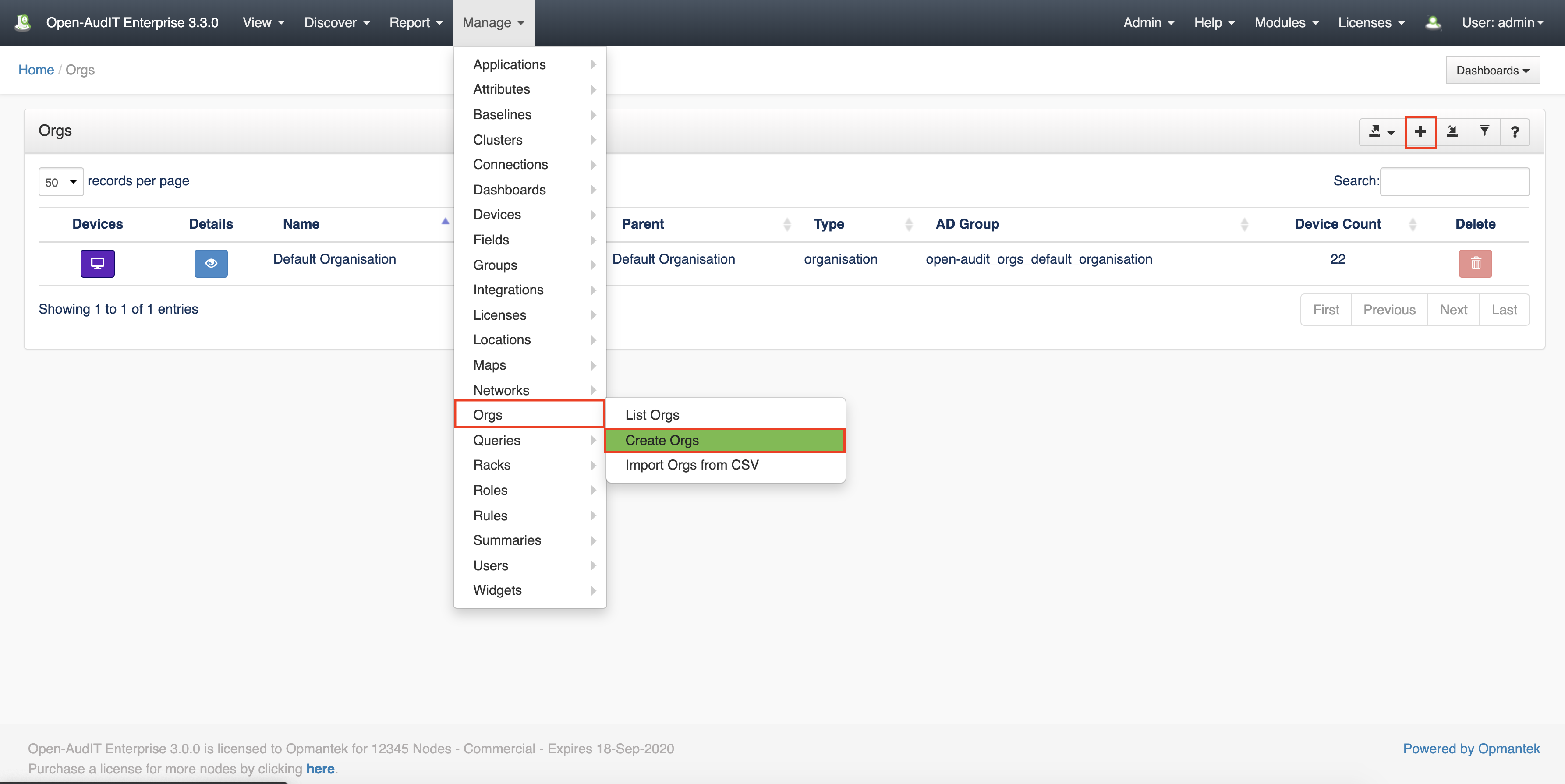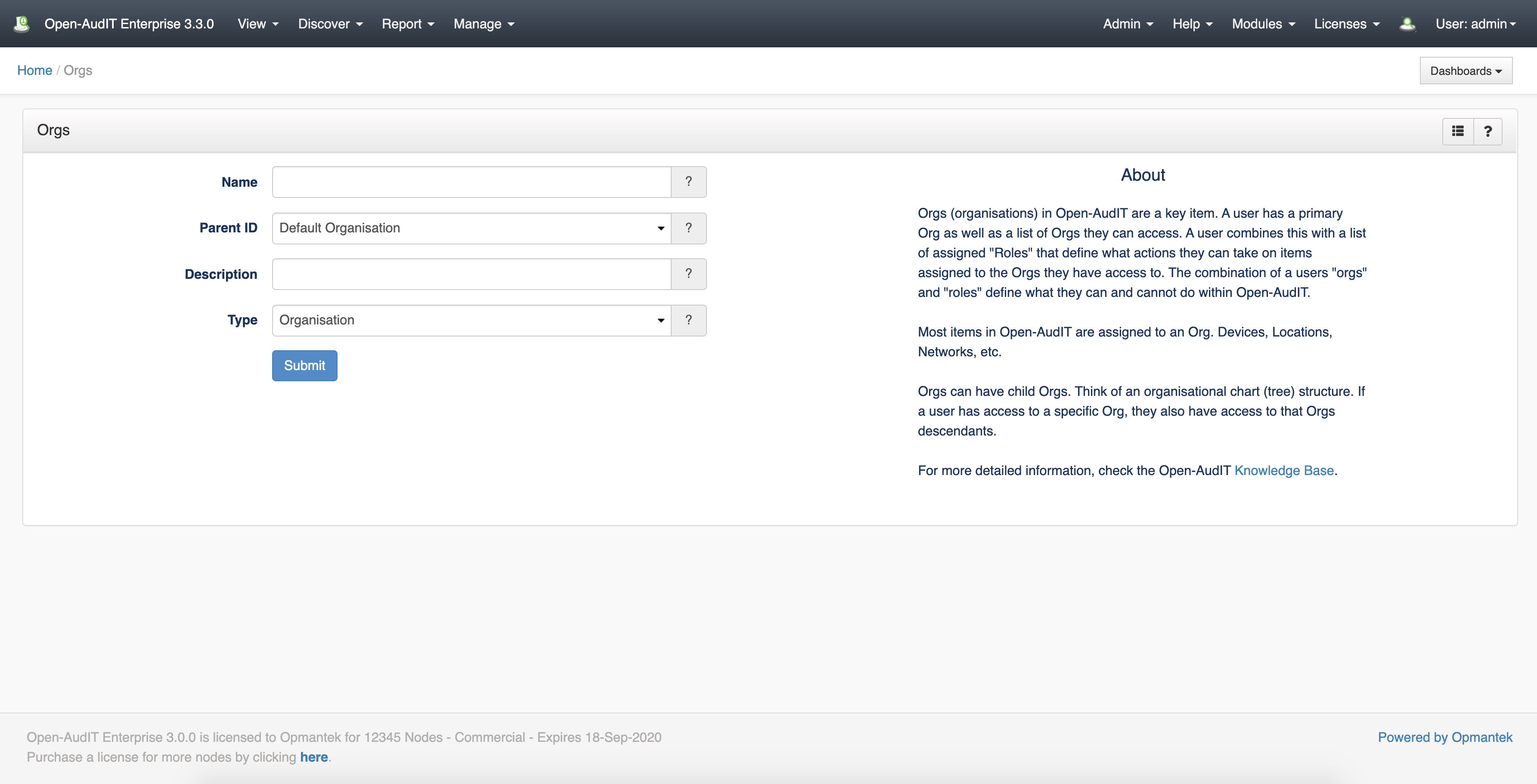Introduction
This new access method replaces the old admin_org controller and functions.
How Does it Work?
Orgs (organisations) in Open-AudIT are a key item. A user has a primary Org as well as a list of Orgs they can access. A user combines this with a list of assigned 'Roles' that define what actions they can take on items assigned to the Orgs they have access to. The combination of a users 'orgs' and 'roles' define what they can and cannot do within Open-AudIT.
Most items in Open-AudIT are assigned to an Org. Devices, Locations, Networks, etc, etc.
Orgs can have child Orgs. Think of an organisational chart (tree) structure. If a user has access to a specific Org, they also have access to that Orgs descendants.
Creating an Organisation
Join Paul McClendon, an Opmantek Support Engineer, as he demonstrates how to create organizations to be used in Open-AudIT.
To make another organisation go to menu: Manage -> Orgs -> Create Orgs.
View Organisation Details
Go to menu: Manage -> Orgs -> List Orgs.
Database Schema
The schema for the database is below. It can also be found in the application if the user has database::read permission by going to menu: Manage -> Database -> List, then clicking on the "orgs" table.
CREATE TABLE `orgs` ( `id` int(10) unsigned NOT NULL AUTO_INCREMENT, `name` varchar(200) NOT NULL DEFAULT '', `parent_id` int(10) unsigned DEFAULT '1', `description` text NOT NULL, `ad_group` varchar(100) NOT NULL DEFAULT '', `edited_by` varchar(200) NOT NULL DEFAULT '', `edited_date` datetime NOT NULL DEFAULT '2000-01-01 00:00:00', PRIMARY KEY (`id`) ) ENGINE=InnoDB AUTO_INCREMENT=3 DEFAULT CHARSET=utf8;
Example Database Entry
Orgs are stored in the database in the "orgs" table. A typical entry will look as below.
id: 2
name: Sea View Office
parent_id: 1
description: Awesome view
ad_group:
edited_by: Administrator
edited_date: 2017-05-17 16:31:44
API / Web Access
You can access the /orgs collection using the normal Open-AudIT JSON based API. Just like any other collection. Please see the API documentation for further details.
API Routes
Request Method | ID | Action | Resulting Function | URL Example | Notes | Example Response |
|---|---|---|---|---|---|---|
| GET | n | collection | /orgs | Returns a list of organisations. | orgs_collection.json | |
| GET | y | read | /orgs/{id} | Returns an organisation's details. | orgs_read.json | |
| PATCH | y | update | /orgs/{id} | Update an attribute of an organisations entry. | orgs_patch.json | |
| POST | n | create | /orgs | Insert a new organisations entry. | orgs_create.json | |
| DELETE | y | delete | /orgs/{id} | Delete an organisations entry. | orgs_delete.json |
Web Application Routes
Request Method | ID | Action | Resulting Function | URL Example | Notes |
|---|---|---|---|---|---|
| GET | n | create | create_form | /orgs/create | Displays a standard web form for submission to POST /orgs. |
| GET | y | update | update_form | /orgs/{id}/update | Show the networks details with the option to update attributes using PATCH to /orgs/{id} |


